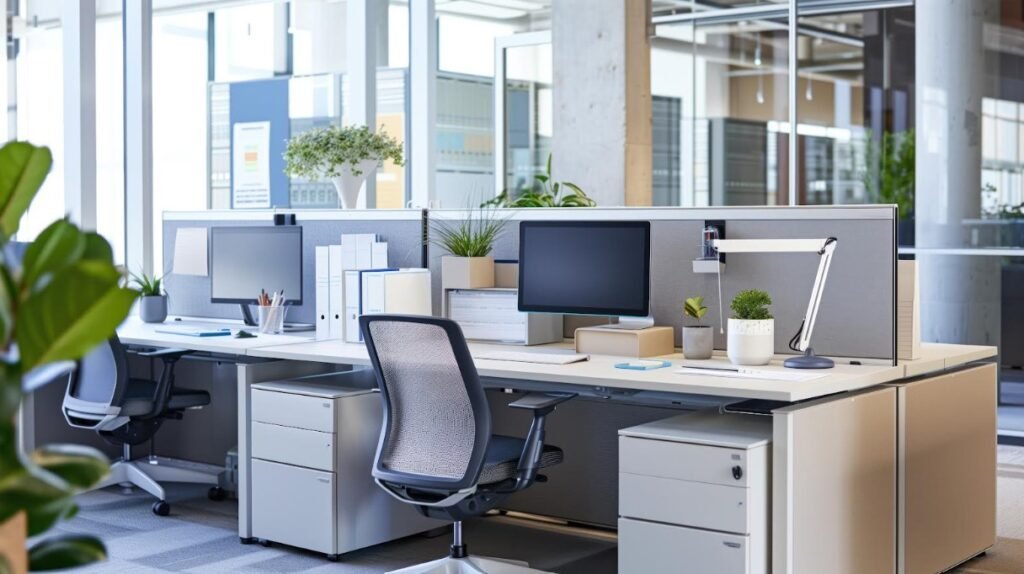Working in a cubicle environment can often feel limiting, especially when the space is small and full of clutter. However, with the right adjustments, your cubicle can become a highly productive, comfortable, and inspiring workspace. Optimizing your workstation involves more than just organizing your desk; it’s also about creating a balanced, efficient environment that allows you to focus on your tasks and collaborate effectively. Below are four practical ways to optimize your cubicle workstation for maximum productivity.
1. Invest in Ergonomics
Is your cubicle ergonomically sound? Poor posture or discomfort from sitting for extended periods can lead to fatigue, discomfort, and even health issues.
Chair: Your office chair should provide adequate lumbar support and be adjustable in height and tilt.
Desk height: Your desk should be at the right height so that your forearms remain parallel to the floor when typing.
Monitor placement: Position your monitor about an arm’s length away. This minimizes neck strain and promotes good posture.
2. Declutter Your Office
Your brain and elbows need room to work best, so clearing away the clutter is a must. Did you know that a cluttered desk can lead to distractions and reduce productivity? By maintaining an organized and tidy workspace, you create a more efficient and peaceful work environment.
Desk accessories: Use organizers such as drawer dividers, file trays, and desktop organizers to store office supplies. This will prevent pens, papers, and other small items from taking up valuable space.
Go digital: You can minimize paper clutter by digitizing documents whenever possible. In fact, this is the way to go in this digital age. Use cloud storage solutions for files you access frequently and create digital to-do lists to keep track of your tasks.
Cable management: Tangled cables not only make your workspace look messy, but they can also create unnecessary distractions. Use cable clips or sleeves to bundle cords and keep them out of sight. You can also use a cable tray under your desk to hide cables and keep them from interfering with your work.
3. Customize Your Workspace for Comfort
Personalizing your cubicle can make it feel more like your own space and increase comfort. A pleasant environment boosts morale and can make working long hours more enjoyable.
Lighting: Many cubicles rely on harsh overhead fluorescent lights, which can cause eye strain and headaches. If possible, replace your desk lamp with one that provides softer, adjustable light. Consider getting a desk lamp with a dimmable feature or natural light bulbs to mimic daylight and reduce fatigue.
Temperature control: For an office with temperature control issues, try using a small fan or personal heater to regulate your comfort level. Being too hot or too cold can distract you and lower your productivity.
Plants and decor: Adding plants, photos, or artwork to your cubicle can improve the atmosphere and make the space more inviting. Plants not only add a pop of color but also improve air quality and reduce stress levels, creating a more productive environment.
4. Maximize Productivity with Technology
Leveraging technology can significantly boost your efficiency and help you stay organized throughout the day.
Use productivity tools: Utilize task management tools, such as Asana, Trello, or Microsoft To-Do, to keep track of your tasks and deadlines. These tools allow you to break projects into manageable tasks, set reminders, and collaborate with coworkers more effectively.
Digital assistants: Consider using digital assistants like Google Assistant or Siri to set reminders, check your calendar, or look up information quickly, without interrupting your workflow.
Monitor calibrations: Use screen filter software or apps to reduce blue light exposure, especially if you’re working late. Many productivity tools also help reduce distractions by blocking certain websites or apps during work hours to improve focus.

